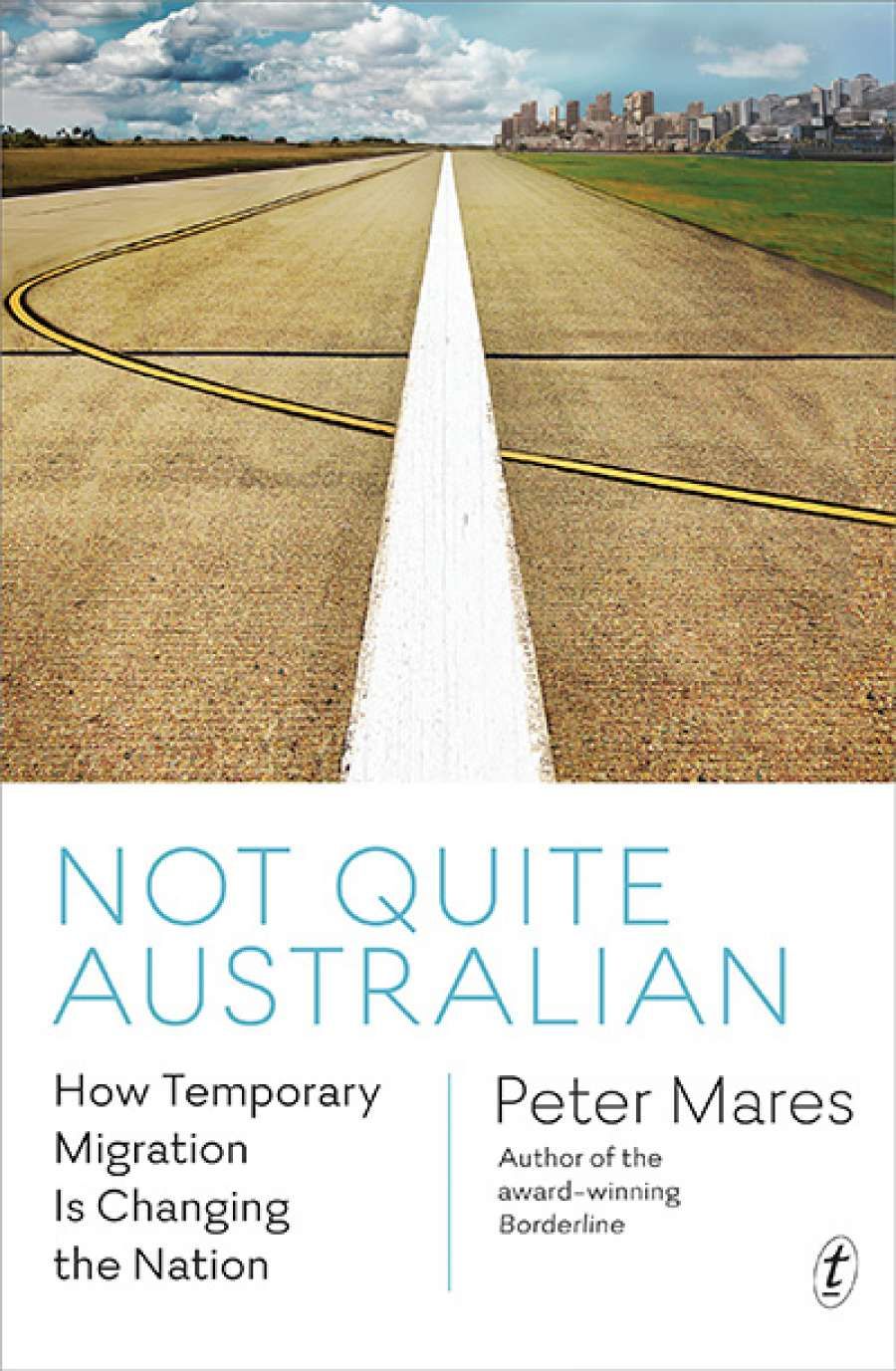
- Free Article: No
- Contents Category: Society
- Custom Article Title: Maria O’Sullivan reviews 'Not Quite Australian: How temporary migration is changing the nation' by Peter Mares
- Custom Highlight Text:
Migration is widely regarded as one of the most important policy issues on the global agenda. Not only does it have economic implications for states, it also poses certain challenges for ...
- Book 1 Title: Not Quite Australian
- Book 1 Subtitle: How temporary migration is changing the nation
- Book 1 Biblio: Text Publishing $32.99 pb, 357 pp, 9781925355116
In focusing the book on this issue, Mares makes a valuable contribution to existing knowledge about Australian migration programs. Much has been written about Australia’s treatment of asylum seekers and refugees. Indeed, Peter Mares has contributed to this debate through his excellent book Borderline (2001). While the refugee debate is undoubtedly a pressing one, there are also important aspects of temporary migration which require policy and public attention, and Mares fills an important gap in the literature.
In addressing these issues, Mares begins from the premise that Australia has traditionally been a ‘settler society’. That is, the historical focus of immigration has been for nation building, and Australian multiculturalism has been ‘citizenship centred’. Now large numbers of temporary migrants are entering Australia. As Mares notes, these temporary migration categories are uncapped, and sometimes these entrants reside in Australia for extended periods.
Mares is concerned about two potential outcomes of this shift away from the settler-society model. The first is that a growing number of temporary migrants will become active and engaged members of Australian society for an extended period of time without necessarily being able to access permanent residency or citizenship. The second is that an increasingly large and significant share of Australia’s population and labour force will be made up of temporary migrants. He then asks an important question which operates as a central theme of his book: what impact does this have on the concept of an Australian liberal democracy?
In answering these questions, Mares presents compelling case studies of the dangers posed for individuals on temporary visas. These include issues of which many readers will be aware, such as the exploitation of workers, but also highlight lesser-known problems, for instance, reduced entitlements for workers compensation, emergency payments, and other gaps in the protections of the law.
In addition to highlighting the problems with temporary migration, Mares (helpfully) makes recommendations as to how policy can be improved. Two key recommendations are that temporary migrants would be entitled to become permanent after a period of eight years, and that a cap should be placed on temporary migration (as we do with permanent migration).
There are a number of positive things to say about the way in which Mares approaches this material. First, his prose is extremely accessible and engaging. His use of case studies and interviews with migrants strengthens his analysis and gives it authenticity. He also exhibits good knowledge of the leading international authorities on migration, referring to leading migration scholars such as Joseph Carens and Michael Walzer, which grounds the work in an ethical context. Because of its topicality and the ease with which Mares communicates his ideas, the book will be of interest to the general public, as well as to journalists, academics, and policy-makers.
However, there are aspects of his analysis which may have benefited from a more nuanced approach. For instance, in discussing TPVs, Mares recommends that refugee status should be permanent once refugee recognition takes place (or at least after two years on a TPV). However, some have argued that protection for refugees should not be seen as a means of permanent residence in an asylum host state; that is, that there is no absolute link between refugee status and a right of permanent immigration. The analysis of this issue by Mares would have been strengthened by acknowledging this counterargument.
Secondly, while I recognise that Mares clearly limits his analysis to a focus on Australian democracy, some reference to the broader debates about the effect of migration on countries of origin would have given some context to his conclusions. Temporary migration can confer significant benefits on developing countries by giving individuals an opportunity to acquire education and skills, and then return to their home country. What then are the implications of Mares’s proposal to frame temporary migration as a pathway to permanence in Australia? Will it provide incentive for skilled people to stay in Australia rather than to return to their home country and contribute politically, socially, and economically to their own democracies? Although I concede that Mares does not set out to write a text on migration and development, the broader effect of his proposals could have perhaps been addressed in his conclusions to provide a fuller picture of the global context in which migration policy operates.
Nonetheless, Not Quite Australian is an important and timely contribution to the debate about how Australia should handle the migration of people to its territory, and I highly recommend it.


Comments powered by CComment